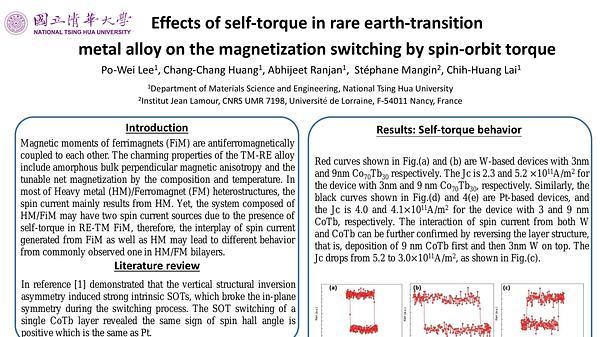Would you like to see your presentation here, made available to a global audience of researchers?
Add your own presentation or have us affordably record your next conference.
Magnetic skyrmions is a vortex like nanosized spin swirling texture with particle like property 1. In the past decade, magnetic skyrmion has triggered great interest as component in futuristic magnetic memory devices due to its topological property, smaller size (few nm) and efficient current driven motion. The chiral cubic β-Mn type (Co0.5Zn0.5)20-xMnx (3 ≤ x ≤ 7) alloys are fascinating as they allow the fine tuning of size and stability of skyrmions in wide temperature range with composition 2. Among (Co0.5Zn0.5)20-xMnx alloys, magnetic properties of the Co7Zn7Mn6 alloy are of renewed interest due to the detection of two independent skyrmion phases (SkX): (i) a conventional thermodynamically stable SkX below helimagnetic to paramagnetic transition temperature (TC ~ 213 K) and (ii) a disordered skyrmion phase above spin glass transition (Tg ~ 23 K) 3-4. In spite of much progress made on the investigation of exotic magnetic field-temperature phase diagram of Co7Zn7Mn6 helimagnet, the nature of its underlying magnetic interactions still remains elusive. Thus an elaborate in-field critical behavior study of skyrmion hosting polycrystalline cubic β-Mn type Co7Zn7Mn6 chiral magnet based on magnetic isotherms measured in the vicinity of ordering temperature is presented. The critical exponents β, γ and δ for spontaneous magnetization, initial magnetic susceptibility and critical M-H isotherm, respectively are evaluated through the modified Arrott plot, Kouvel-Fisher method and critical isotherm analysis. The estimated critical exponents β = 0.382(1), γ = 1.386(2) and δ = 4.628(1) follow Widom equality and magnetic scaling equations of state. The values of these exponents corroborate that the critical behaviour of Co7Zn7Mn6 system is akin to that of three-dimensional (3D) isotropic nearest-neighbour Heisenberg ferromagnet in which the attractive extended type short-range interactions between spins decay with distance r as J(r) ~ r-4:94.
References
1. S. Mühlbauer, B. Binz, F. Jonietz, Science 323, 915 (2009)
2. Y. Tokunaga, X. Yu, J. White, Nat. Commun. 6 (1) 1–7 (2015)
3. K. Karube, J. S. White, D. Morikawa, Sci. Adv. 4 (9) eaar7043 (2018)
4. V. Ukleev, K. Karube, P. Derlet, npj Quant. Mater. 6 (1) 1–8 (2021)

